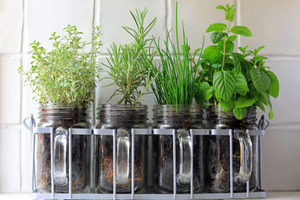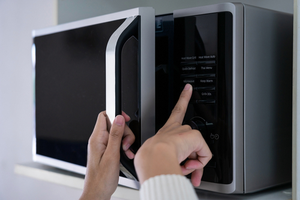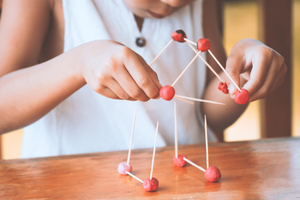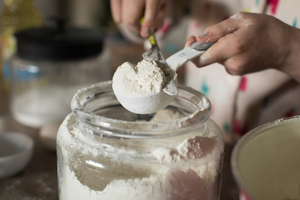Kids in the kitchen: four ways to inspire bright minds through cooking
Once upon a time, kids spending time in the kitchen was mostly about the chance to lick the cake beaters.
Don’t get us wrong, the beaters are still very important, but these days helping out with the cooking is also a chance to encourage brighter thinking through STEM learning.
Looking for a few easy ways to inspire bright young minds? Bringing STEM learning into your home is a great way to start.
What is STEM?
STEM is a learning and development approach that emphasises the importance of science, technology, engineering and mathematics on young minds.
Through STEM, children engage creatively in real-world problems and look for solutions and outcomes in integrated and innovative ways.
And getting them started is as simple as strolling into the kitchen – here are a few suggestions to engage young minds.
Growing your own herbs (Science)
There’s something satisfying about putting homegrown produce to good use in the kitchen – but the growing part is where STEM learning comes alive.
Get started with a small herb garden in a planter or using extra  gardening pots – and explain how seedlings need rich soil, sunlight and water to grow into tall and healthy plants.
gardening pots – and explain how seedlings need rich soil, sunlight and water to grow into tall and healthy plants.
Track your herb garden’s progress, taking photos and explaining growth phases along the way, or experimenting with different growing locations to see if they help or hinder growth.
Go for a variety of herbs to see how plants grow in different ways, then put them to good use in the kitchen for added flavour.
A handful of basil in pasta sauce, a sprinkling of finely-chopped rosemary over oven-baked potato wedges or mint leaves into a glass of cold water for a refreshing twist? Yum.
Cooking up some tech thinking (Technology)
Advancements in kitchen technology mean we’re spending much less time over a hot stove these days.
Bringing the kids up to speed on kitchen technology basics is a great way to inspire STEM thinking – be it the basics on kettles, toasters, fridges or ovens.
But if you really want to inspire thinking in older kids, consider a crash course on the microwave oven.
In simple terms, microwave ovens work by passing microwave  radiation through food. Water molecules in the food absorb this energy, which causes them to react and move – creating heat.
radiation through food. Water molecules in the food absorb this energy, which causes them to react and move – creating heat.
You can demonstrate this to kids using simple microwave popcorn, which involves microwaves reacting with water molecules in corn kernels and increasing pressure until they pop – with the paper bag trapping steam to quicken the process.
Be sure to double-check your microwave’s wattage and associated cooking time to ensure you enjoy a full bag of perfectly-popped popcorn, but handle with care as it’ll be hot!
Sure, kitchen technology’s come a long way, but saving time when cooking comes down to the basics. Check out these five kitchen essentials you need in your life.
Design and build a playdough project (Engineering)
Got a young budding engineer in your household? Engage their innovative side by challenging them to construct a bridge or other structures using playdough – guiding them through any hurdles along the way.
Using playdough is a valuable sensory experience, and throwing a handful of popsicle sticks, toothpicks or straws into the mix will provide extra inspiration to support play learning.
Whipping up a fresh batch of playdough is a cinch (and letting kids  help with measuring ingredients will add an extra dose of STEM learning).
help with measuring ingredients will add an extra dose of STEM learning).
Just mix one cup of plain flour, half a cup of salt and two tablespoons of cream of tartar into a bowl – then combine with half a cup of water, a tablespoon of oil and a few drops of food colouring.
Stir over low heat until a dough forms, then remove from the heat and allow to cool. Store for several weeks in an air-tight container.
A little bit of this, a little bit of that (Measurement)
Are you a stickler for following recipes to the letter, or prefer to go with what feels right?
If you’re keen to get the kids involved in the kitchen, having them follow a specific recipe is a great way to challenge their thinking with a range of measurements.
Baking is a great way to emphasise the importance of accurate measurements, as too much or too little of one ingredient can often make all the difference.
Whipping up a simple butter cake with the kids is an excellent way to practice taking accurate measurements using a range of different ingredients and utensils.
practice taking accurate measurements using a range of different ingredients and utensils.
Let them set the correct oven temperature and, once your cake tin’s baking away, track the cooking process.
If you’re looking for more STEM learning inspiration, head to the Australian Government website for plenty of handy information and tips for bringing STEM to life at home.